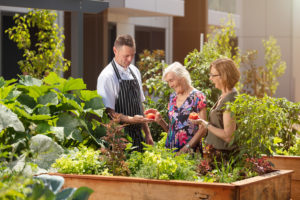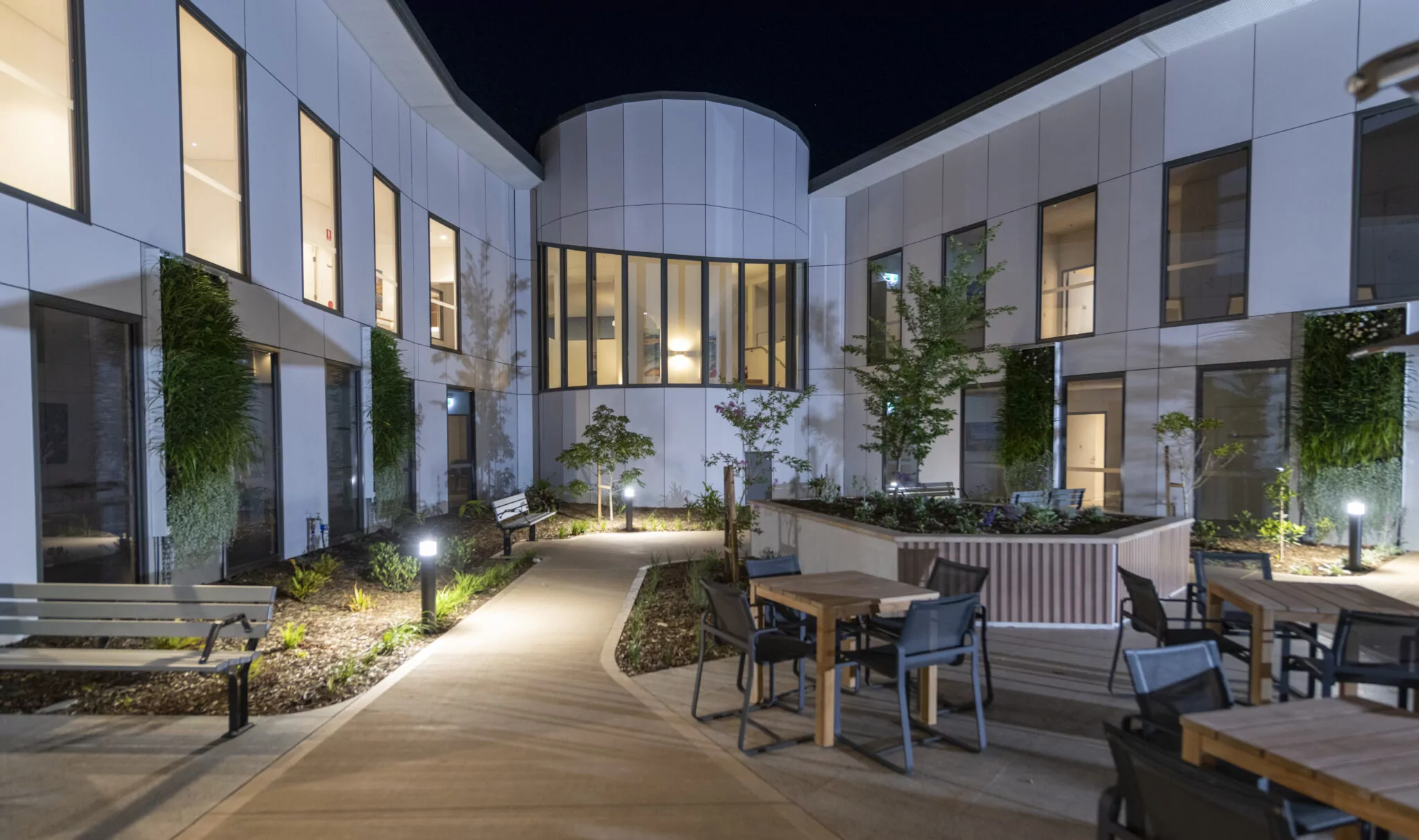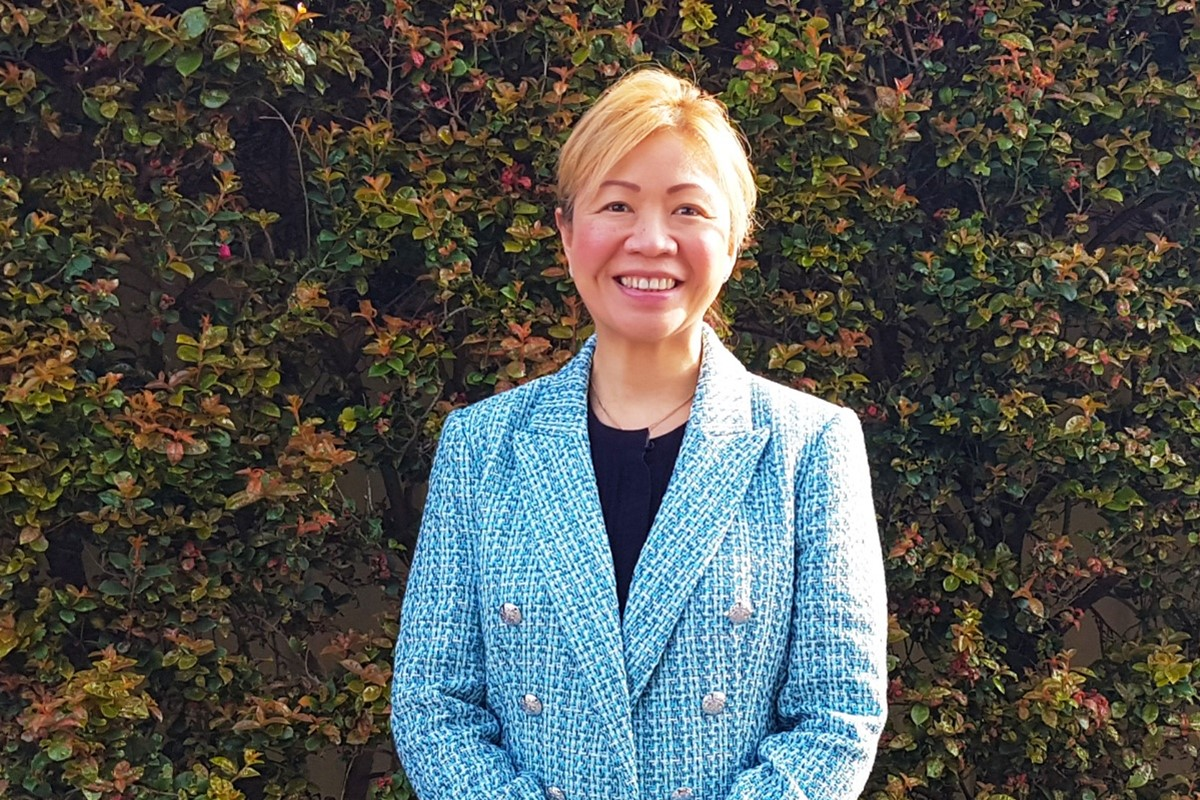For the residents of Glengara Care and Glengara Retirement Village, it could be easy to take it all for granted.
After all, topiary and green walls rarely top a must-have list for care apartments or retirement living. But behind the carefully shaped hedges and award-winning subtropical gardens connecting Glengara’s independent living villas, Glengara Care apartments, and public spaces is a team of very busy gardeners dedicated to making the residents’ expansive surroundings green.
Head gardener Matt Keanelly leads a team of 10 gardeners responsible for creating and maintaining a vast collection of hedges, palms, feature gardens and lawns.
“All of Glengara’s gardens are maintained by the whole team. This includes the 313 independent villas and 70 care apartments as well as all common areas including the pool, the memorial gardens, the ecologically sensitive areas, the vegetable gardens and the perimeter fence gardens,” he said.
Verdant spaces and budding blooms
“Glengara has a formal garden design with shaped hedges, but also features a semi-tropical design with lots of golden canes, bangalows, cycads, Canary Island date palms, magnolias, cordylines, frangipanis and strelitzia – all varieties which were all the rage when the bulk of the village was built in 1998.”
Throughout the village, the plants change depending on the orientation of the villas. Lilly pillies, murraya, golden durantes, snow maiden and buxus are shaped, providing a cohesive theme that flows through the grounds, while little ruby, tricolor, and viburnum add splashes of colour.
“Some of the more unique plants at Glengara include the teddy bear magnolia, the giant bromeliads, fiddle leaf figs, crepe myrtles, canary island palms and tiger grass,” Mr Keanelly said.
“I do like to use a lot of different plant species, but my top three plants are the loropetalum plum – which is gorgeous. It’s got a super attractive pink flower and unique purple leaves. The tibouchia jazzie has a superb purple flower and flowers for most of the year. It can also be pruned into a unique shape and finally alternanthera (little ruby) – it makes a great border plant with its attractive red/purple leaves.

Striking garden features
“We also have 16, six-metre-high vertical plant walls that feature in our Glengara Care apartments, which really softens the look of the building. And the new care apartment gardens have created a different aspect for my team to work on with their internal location. The gardens are viewed from most points inside the building, so this is an ongoing focus for us to keep establishing and creating a beautiful space for the Glengara Care residents to enjoy and potter around in.”
Planning, pruning and pests
Mr Keneally says the key to keeping this wide array of plants and gardens looking their best is planning, pruning and pest control.
“We have a routine. The gardens are split into 10 areas, which covers around 32 villas. We prune one area each week, so every villa gets pruned five times over the year. Fertilising is completed within the 10-week pruning schedule,” he said.
“For mulching, we have a three-yearly schedule. Each year, we use an average of 250 cubic metres of an aged native mulch from our local landscaping supplier. We use it to mulch around 100 villas every year, including front, side and back gardens.
“An average day for the Glengara garden team starts with pruning the scheduled area. Once the pruning is complete, we pick up our clippings and any palms fronds or trees that we have cut back. We also weed, treat infected plants and lawns, fertilise any sick plants and finally use a blower to keep the area clean and tidy.”
While the grass is cut by an external contractor, Mr Keanelly and his team keep the lawns healthy and weed-free.
“The gardening team and I maintain the lawn weeds. We use Bin-Die to control this issue. We also topsoil the lawns when needed. We get the top soil from a local supplier – my tip is the smellier it is, the better. For fertiliser, we use Shirleys No. 17 Lawn Food, and of course, we aerate the turf,” he said.
The team’s regular pruning and fertilising schedule keep Glengara looking lush – but things don’t always go to plan.
“The main challenge we face at Glengara is the weather. Too much rain and the plants explode with growth. But if there is no rain, keeping the plants healthy and alive is a challenge. Another small issue we have is bandicoots. They also seem to love the grounds around Glengara and make a lot of mess for us to repair,” Mr Keanelly said.
Smaller pests can also test the gardening team, with mealybugs, lilly pilly beetle, black sooty mould, aphids, white scale and pink wax scale popping up here and there.

Keanelly’s top tips
“My top tips on maintaining large scale gardens are to identify pest and disease early and treat to appropriately. I use eco oil or pyrethrum to control these pests. You also need to fertilise the gardens at the appropriate times, in spring and again in late summer and early autumn or when rain is forecast. Apply heavy watering on newly established gardens, use a safe and effective poison on weeds, mulch thick and prune hard in summer.
Despite the intense maintenance schedule, Mr Keanelly says he loves the work and the results.
“Having beautiful gardens gives our residents a great place to live and to really enjoy their hard-earned retirement. All our residents are very passionate about their own gardens, which really helps, and they all really enjoy all our flowering plants and creative hedges in Glengara,” he said.
For more information on Glengara Care or to speak to one of our friendly sales team members please click here.





